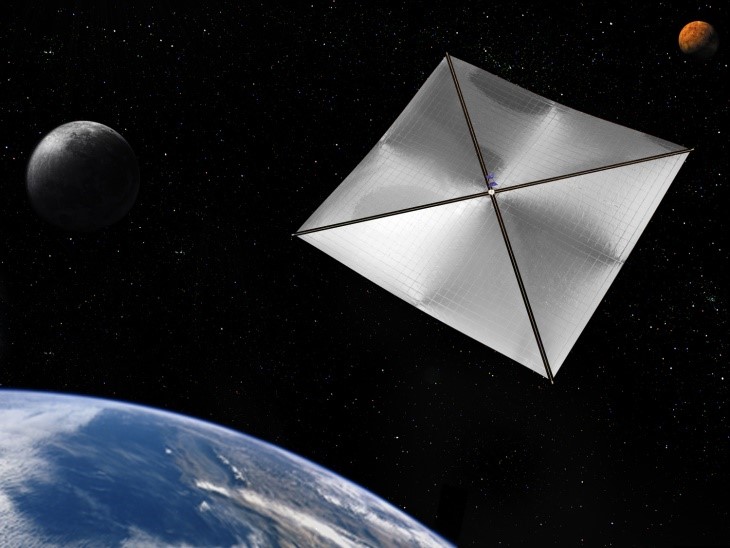THE POTENTIAL OF SOLAR SAILS
By Kia Popat
Journeys to space are limited by the power of rocket engines, and how much fuel that can be carried by them. 95% of the weight of a current spacecraft is fuel, and if we could reduce the amount of fuel needed, we would be able to accomplish much more. Many other methods of transportation have been proposed, and surprisingly, the most realistic of these methods is replacing rocket engines and rocket fuel with sails.
Solar sails are a relatively recentnew technology that may well will allow us to harness the sun’s power to to allow us tolong distance, self-sustaining travel in space. Sunlight exerts enough force through photons bombarding an to move object to exert pressure. s, and NASA has used this force to experiment with giant solar sails that can travel using the power of sunlight. This phenomenon was discovered as realistic after needing to bail out Mariner 10 in 1974 on its trip to Mars, which was running low on gas propellant for altitude and so they succeeded in using its solar array instead to change altitude using solar power also.
There are three components to a solar sail-powered spacecraft:
1. A large, ultra-thin mirror
2. A separate launch vehicle
3. Sunlight
A large, ultra thin mirrorA separate launch vehicle
As these spacecrafts are powered by the electromagnetic radiation of the sun, it would not need a traditional propellant for power and therefore would be much lighter than traditional rockets.
At 1 astronomical unit, or 150 million km (the distance from the sun to the Earth), sunlight can produce 1.4 kilowatts of power, and if this is divided by the speed of light, the force exerted by the sun is 9N, which is significantly smaller than the force exerted by a space shuttle main engine, which is 1.67 million N during lift off on Earth, and 2.1 million N of thrust in a vacuum, which is why a separate launch vehicle must be used to help launch a solar sail spacecraft, either by launching the sail itself, or to provide the solar sail with microwaves and laser beams as a secondary power source.
Eventually, the continuous force of sunlight via photon bombardment would propel a solar sail to speeds up to five times faster than that of a traditional rocket, through almost perpetual acceleration eventually approaching the speed of light or rather sunlight itself, away from the sun.
Whilst the concept of solar sails is not a new one, the materials available until recently were impractical to construct a sail. for the making of solar sails. The ideal To make a practical solar sailing vehicle , the material used must be highly reflective, lightweight, ultra-thin and be able to tolerate extreme temperatures. The reflective properties of the material are arguably the most important. Photons (light particles) bounce off the reflective material, which gently pushes the sail along by transferring momentum to the sail.
As there are many photons which are constantly hitting the sail, there is a constant pressure exerted on the sail which produces a constant acceleration. This means that whilst the force on a solar sail spacecraft is at first much less than that of a conventional chemical powered rocket the constant acceleration over time eventually allows it to achieve a much greater velocity.
Appreciating the elegance of solar power to sail into space, we can see that this form of travel will play a key role in the future From this, it is easy to see that solar sails will eventually play a key role especially for in long distance space missions. Whilst a rocket will eventually run out of power, and not be able to return to Earth, a solar sail has an endless supply of power from the sun, and can potentially return back to Earth. As acceleration continues to build, a solar sail spacecraft would build up speeds that would would be 10 times faster than that of a space shuttle’s orbital speed.
To illustrate this, demonstrate this, if NASA launched an interstellar probe powered by solar sails, it would only take only 8 years for it to catch up with o the Voyager 1 spacecraft (the furthest craft away from Earth), which has been travelling for over 20 years, and with the addition of a laser or magnetic beam transmitter, speeds would reach be pushed to 30,000 km/s, which is 1/10 of the speed of light, which would finally make certainly make interstellar travel, truly much more feasible.

